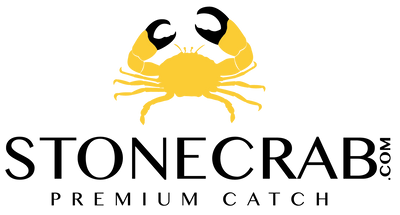Key Dates for Florida’s Stone Crab Season
Florida's stone crab fishery is not only a vital part of the state's coastal economy but also a cherished tradition for seafood lovers who eagerly await the harvest of these succulent claws each year. This unique industry operates on a carefully regulated schedule to ensure the long-term viability of the stone crab population while providing a sought-after delicacy to seafood enthusiasts. Understanding the key dates of the Florida stone crab season is essential for fishermen, restaurateurs, and consumers alike.
Season Opening: October 15
The Florida stone crab season officially begins on October 15th each year. This date marks the start of a flurry of activity along Florida's coastlines, as commercial fishermen and recreational crabbers alike prepare to harvest the prized claws. The mid-October opening is strategically timed to minimize impact on the stone crabs' primary spawning period, which occurs during late summer and early fall.
On this day, crabbers are permitted to begin pulling their traps from the water at 12:01 AM. Many commercial operations start well before dawn to maximize their first day's catch. The opening of the season is often celebrated with stone crab festivals and special events in coastal communities throughout Florida.
Peak Season: November through January
While stone crabs can be harvested throughout the entire season, the months of November through January are generally considered the peak. During this period, stone crabs are typically at their largest and most abundant. The cooler water temperatures of late fall and early winter encourage stone crabs to be more active, often resulting in higher catch rates.
The holiday season, particularly Thanksgiving and Christmas, sees a surge in demand for stone crab claws. Many Florida restaurants and seafood markets promote special stone crab offerings during these months to capitalize on the increased availability and consumer interest.
Mid-Season Assessment: January - February
Around the midpoint of the season, usually in January or February, the Florida Fish and Wildlife Conservation Commission (FWC) often conducts assessments, including population density studies and measurements of claw sizes, to gauge the health of the stone crab population. These evaluations help determine the health of the fishery and may inform any necessary adjustments to regulations or harvesting practices for the remainder of the season or future seasons.
Season Closing: May 1
The Florida stone crab season comes to a close on May 1st each year. All traps must be removed from the water by this date, with a grace period typically extending to May 5th for retrieval of lost or abandoned traps. The closure of the season coincides with the beginning of the stone crabs' primary molting period, during which they shed their old shells and grow new ones.
This May 1st closure date is crucial for the sustainability of the stone crab population. It allows the crabs to reproduce and molt without disturbance, ensuring healthy populations for future seasons. The off-season also gives the marine ecosystem a chance to recover from the impacts of trapping activities.
Trap Deployment: October 5
While the harvesting of stone crab claws doesn't begin until October 15th, commercial fishermen are allowed to start placing their traps in the water ten days earlier, on October 5th. This early deployment period enables crabbers to strategically position their traps in prime locations before the season opens.
The ten-day lead time also helps ensure a sustainable harvest by allowing crabbers to set traps in optimal locations, reducing the pressure on any single area. However, it's important to note that while traps can be deployed, they cannot be baited or harvested from until the official season opening on October 15th.
Off-Season Activities: May 2 - October 4
During the closed season from May 2nd to October 4th, direct harvesting of stone crabs is prohibited. However, this period is far from idle for those involved in the industry. Fishermen use this time to repair and prepare their traps, boats, and other equipment for the upcoming season.
The off-season is also crucial for scientific research. Marine biologists and fishery managers conduct studies on stone crab populations, habitat conditions, and the effectiveness of current regulations. This research helps inform future management decisions and ensures the long-term sustainability of the fishery.
Additionally, many restaurants and seafood markets use the off-season to plan their menus and marketing strategies for the upcoming stone crab season. Some establishments may offer frozen stone crab claws during this period, but fresh claws are generally unavailable until the season reopens in October.
Understanding these key dates is essential for anyone involved in or interested in Florida's stone crab industry. From the excitement of the season opening to the necessary quiet of the off-season, each phase plays a vital role in maintaining this valuable and sustainable fishery for generations to come.
Sources:
- Florida Fish and Wildlife Conservation Commission. "Commercial Fisheries Regulations: Stone Crab."
- Gulf of Mexico Fishery Management Council. "Stone Crab Fishery Management Plan."
- University of Florida IFAS Extension. "Florida Stone Crab Fishery: A Unique Sustainable Industry."



